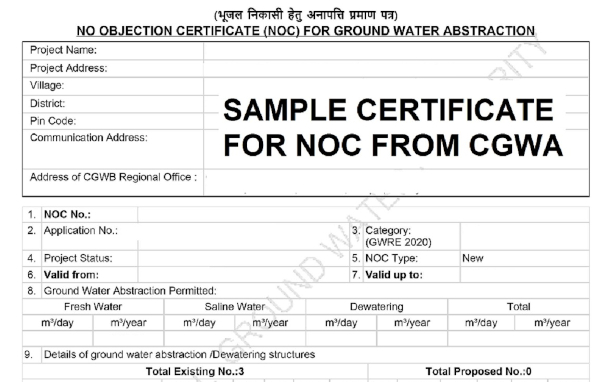What is Groundwater survey?
Ground water survey also known as hydrogeological and Geophysical survey is conducted using dowsing , electromagnetic instruments to determine suitable locations for borewell drilling .
Underground water survey is conducted prior to drilling a borewell in order to estimate the quantity of water available at a particular location.
Ground water survey aims at finding out Aquifer zones at sub surface prior to drilling operation.
Objective of CGWA NOC:
The objective of the CGWA NOC is to make sure that groundwater extraction is being performed systematically. This implementation aims CGWA to prevent groundwater depletion, protect the environment, and reduce the impact of water scarcity which is the serious cause.
There are varied activities that are performed by industries, Infrastructure projects, Mining operations, bottled water plants which require huge amounts of groundwater extraction. By mandating the NOC requirement, the Central Groundwater Administration wants to balance economic development and environmental sustainability.
How to obtain CGWA NOC:
Steps to get NOC from CGWA
- 1. Submit Application : It is very important to submit all your information to the CGWA in which the amount of ground water required should be clear, specifying the genuine purpose and make sure to mention the source of groundwater extraction.
- 2. Site Inspection
- 3. NOC Issuance
- 4. Compliance Monitoring
Advantages of CGWA NOC:
When you issue NOC by CGWA, it assists in several groundwater management:
- Sustainability: CGWA NOC makes sure that groundwater extraction remains within sustainable limits, and abundant availability.
- Environmental Protection: By regulating groundwater extraction, CGWA helps protect the environment and maintains the ecological balance of ecosystems dependent on groundwater.
- Water Security: Effective groundwater management through NOC sticks to a more reliable and stable water supply.
- Data Collection: The process of issuing NOC also helps CGWA gather valuable data on groundwater availability, usage patterns, and aquifer health, aiding in better decision-making.
To download as a pdf Click Here

